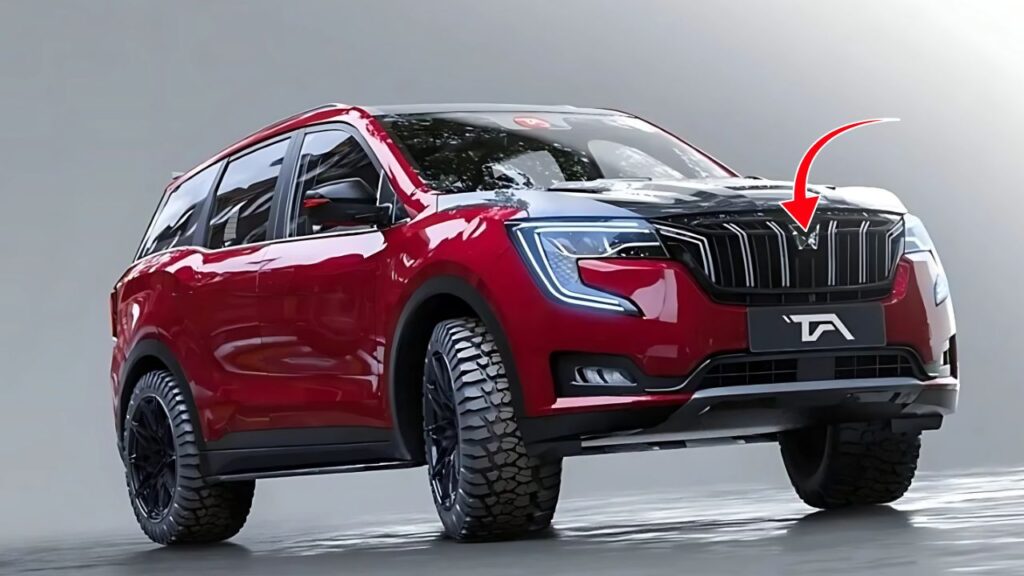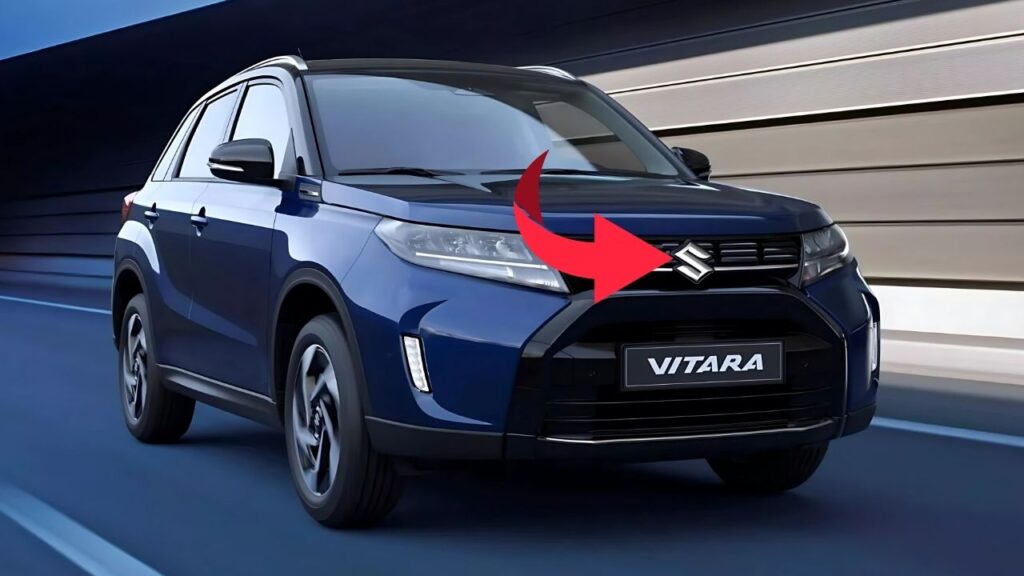Ford Eecosport: In the complex tapestry of India’s automotive history, few vehicles have played as pivotal a role in shaping an entire market segment as the Ford EcoSport.
Launched in 2013 when “compact SUV” was barely a recognized category in the Indian context, this sub-four-meter crossover effectively created and defined a segment that would eventually become one of the most fiercely contested and rapidly growing in the market.
Beyond its commercial success, the EcoSport represented something more significant: a global Ford product developed with substantial Indian engineering input that demonstrated how international manufacturers could create vehicles specifically calibrated for emerging market needs without compromising on quality, technology, or driving dynamics.
Table of Contents
Ford Eecosport: Strategic Genesis: Identifying Untapped Potential

The EcoSport’s conception and development reveal much about Ford’s strategic thinking during a transformative period in the Indian automotive landscape.
The company had established a significant engineering presence in Chennai, initially focused on localization of existing global platforms but increasingly involved in fundamental development work.
This growing technical capability, combined with Ford’s global “One Ford” product strategy under then-CEO Alan Mulally, created the conditions for a vehicle that could simultaneously address specific Indian market needs while maintaining sufficient global relevance for manufacturing scale.
What Ford’s market research identified was a nascent but potentially significant opportunity: urban Indian consumers who aspired to SUV ownership for its commanding driving position, perceived safety, and status connotations, but who faced practical constraints of narrow streets, limited parking, and budget considerations that made traditional SUVs impractical.
Equally important was the regulatory context, where India’s unique tax structure significantly favored vehicles under four meters in length – creating both challenge and opportunity for clever packaging within constrained dimensions.
The resulting development brief called for a vehicle that would deliver SUV aesthetics and driving position within compact external dimensions, provide the performance and features expected of a global Ford product, yet meet price points accessible to India’s expanding middle class.
This ambitious combination of requirements demanded innovative engineering approaches and careful prioritization of features – challenges that would shape the EcoSport’s distinctive character.
Design Philosophy: Condensed Capability
The EcoSport’s exterior design embodied what might be described as “condensed capability” – delivering recognizable SUV proportions and presence despite its compact footprint. The upright stance, high beltline, and short overhangs created a purposeful appearance that distinguished it from hatchbacks while optimizing approach and departure angles for occasional rough road use.
The prominent front grille, initially aligned with Ford’s then-current kinetic design language and later updated to the more sophisticated corporate face, established immediate brand recognition while creating a more premium impression than the price point might suggest.
What made this design particularly successful was how it maintained visual balance despite the challenging proportions dictated by the sub-four-meter length requirement.
The side profile managed to incorporate a rising character line and subtly flared wheel arches that conveyed dynamism without appearing awkward, while the rear-mounted spare tire (on early models) served both practical and aesthetic purposes – adding to the vehicle’s authentic SUV credentials while effectively extending the usable interior space within the length constraints.
Interior design followed similar principles of maximizing perceived space and capability within compact dimensions. The elevated seating position provided the commanding view that represents one of SUVs’ core appeals, while the relatively upright windshield and large glass areas enhanced both objective visibility and subjective spaciousness.
The dashboard architecture struck a balance between the rugged, purposeful aesthetic appropriate for an SUV and the more sophisticated, technology-focused approach expected in contemporary Fords – creating a distinct character that avoided both utilitarian austerity and misplaced luxury pretensions.
This design approach set a template that competitors would eventually follow, demonstrating how compact dimensions need not mean visual insignificance or compromised presence.
The EcoSport established that properly executed design could deliver the emotional appeal of an SUV within practical urban-friendly packaging – a formula that would eventually transform the Indian market’s preference structure.
Engineering Excellence: Global Standards, Local Adaptation
Beneath its distinctive styling, the EcoSport’s engineering represented a sophisticated balance between global Ford standards and specific adaptations for Indian conditions.
Built on the company’s global B-segment platform (shared with the Fiesta), the vehicle benefited from fundamental architectural excellence while incorporating numerous modifications to address local requirements.
The suspension system exemplified this approach. While maintaining the basic architecture of MacPherson struts up front and a twist beam rear – standard fare for the segment – the calibration received exhaustive local development with particular attention to India’s diverse and often challenging road conditions.
The resulting setup delivered an impressive balance between the composed handling expected of a Ford product and the compliance necessary for comfort on imperfect surfaces – a combination that set new standards for driving dynamics in the segment.
Powertrain options similarly reflected thoughtful market calibration. The 1.5-liter naturally aspirated petrol engine provided an accessible entry point with adequate performance and proven reliability, while the 1.5-liter diesel addressed the significant demand for fuel economy and torque that characterized much of the Indian market.
Most notably, the introduction of the 1.0-liter EcoBoost turbocharged petrol engine represented a significant technological statement – bringing a sophisticated, award-winning global powertrain to a price segment where such technology was previously unavailable.
Structural engineering received equal attention, with substantial reinforcement to deal with potential loadings beyond what might be typical in developed markets.
The body structure incorporated additional strengthening in key areas, acknowledging both the potential for higher occupancy rates common in Indian family usage and the increased stresses imposed by rougher road conditions.
This structural robustness contributed significantly to the vehicle’s feeling of solidity and quality – attributes that distinguished it from many competitors and reinforced its positioning as a truly global-standard product despite its accessible price point.
Perhaps most significantly, the EcoSport introduced active and passive safety features that were rare or non-existent in its segment at launch.
Anti-lock brakes, electronic stability control, and up to six airbags set new benchmarks for occupant protection at this price point, while the high-strength steel safety cage demonstrated Ford’s unwillingness to compromise core safety attributes despite cost pressures.
These features not only enhanced actual safety but contributed to the vehicle’s appeal among increasingly safety-conscious urban families.
Feature Integration: Thoughtful Innovation
The EcoSport’s approach to feature content demonstrated a sophisticated understanding of which elements would deliver maximum perceived value and actual utility within cost constraints.
Rather than spreading resources thinly across numerous low-impact features, Ford concentrated on implementing fewer capabilities with exceptional execution – creating genuine differentiation in areas that mattered most to target customers.
The SYNC infotainment system exemplified this philosophy. At a time when most competitors offered basic audio systems with limited functionality, SYNC provided voice control, phone integration, and emergency assistance capabilities more commonly associated with premium vehicles.
Later iterations would incorporate touchscreen interfaces and smartphone connectivity, maintaining the EcoSport’s technological edge despite increasing competition.
Convenience features followed similar principles of focused implementation. The keyless entry and push-button start system delivered a premium experience at a critical touch point, while the automatic climate control system addressed comfort in India’s challenging climate conditions.
The multi-function display provided useful vehicle information without overwhelming complexity, while steering-mounted controls enhanced safety by minimizing distraction during common adjustments.
Storage solutions throughout the cabin demonstrated particular attention to how modern consumers actually use their vehicles.
Multiple dedicated spaces for mobile devices, thoughtfully positioned cup holders, and a cooled glovebox addressed specific daily needs, while the adjustable load floor in the cargo area provided flexibility between maximum volume and hidden storage – acknowledging both practical utility and security concerns in urban usage.
What distinguished these features was not merely their presence but their thoughtful implementation with attention to detail that enhanced actual usability rather than simply creating marketing bullet points.
This approach reflected Ford’s global product development philosophy adapted to Indian market priorities – delivering meaningful innovation where it created genuine customer value rather than feature proliferation for its own sake.
Market Impact and Cultural Significance
The EcoSport’s commercial success upon launch exceeded even Ford’s optimistic projections, with waiting periods extending to months as production struggled to meet demand.
Beyond these impressive numbers, however, the vehicle’s true significance lay in how it transformed consumer perceptions and competitive dynamics across the Indian market.
By demonstrating that SUV attributes could be successfully condensed into a compact, affordable package without significant compromise, the EcoSport effectively created consumer demand for a product category many buyers hadn’t previously considered or even recognized.
The vehicle’s appeal transcended traditional demographic boundaries, attracting everyone from young urban professionals seeking style and technology to practical family buyers prioritizing versatility and value.
Perhaps most significantly, the EcoSport challenged established assumptions about the relationship between vehicle size and status.
By delivering sophisticated design, technology, and driving dynamics in a compact footprint, it helped shift perceptions away from the notion that larger vehicles inherently conveyed greater prestige – an important evolution in a market where space efficiency and urban practicality were becoming increasingly valuable attributes.
The competitive response to the EcoSport’s success was equally transformative. Virtually every major manufacturer developed entries for the compact SUV segment it had pioneered, creating one of the most dynamic and innovation-driven categories in the Indian market.
This proliferation of alternatives ultimately beneficial consumers through increased choice, accelerated feature adoption, and competitive pricing – market effects that extended far beyond Ford’s direct commercial interests.
Ford Eecosport: Legacy and Enduring Lessons
Though Ford’s eventual exit from the Indian market in 2021 brought the EcoSport’s local production journey to a close, the vehicle’s legacy extends far beyond its sales figures or production lifespan.
As a case study in product development, it demonstrates several enduring principles that remain relevant across evolving market conditions.
First, the EcoSport proved that carefully calibrated global platforms can successfully address specific market needs when development incorporates substantial local input and testing.
Rather than either pure localization of existing products or market-specific clean-sheet development, this balanced approach leveraged Ford’s global engineering resources while ensuring genuine market fit – a model that other international manufacturers continue to emulate.
Second, the vehicle’s success highlighted the importance of identifying emerging consumer needs rather than merely responding to established categories.
By recognizing the potential demand for SUV attributes in a compact package before competitors, Ford effectively claimed first-mover advantage in what would become one of the market’s most significant growth segments – demonstrating the value of forward-looking consumer insight beyond current purchasing patterns.
Perhaps most importantly, the EcoSport established that Indian consumers would respond enthusiastically to products that delivered global standards of engineering, safety, and technology when these attributes were thoughtfully adapted to local requirements and price constraints.
Rather than assuming that emerging market customers would accept fundamental compromises, Ford demonstrated that properly executed products could simultaneously meet international standards and local needs – raising expectations across the industry and ultimately benefiting consumers through improved offerings from all manufacturers.
In this sense, the EcoSport’s most significant achievement was not merely commercial success but market transformation – changing how both manufacturers and consumers thought about vehicle categories, feature expectations, and the relationship between size, price, and perceived value.
Few individual models can claim such lasting impact on market evolution, particularly in a landscape as dynamic and competitive as India’s automotive sector.
This transformative influence ensures that even after production has ceased, the EcoSport’s place in Indian automotive history remains secure as the pioneer that defined and established one of the market’s most significant contemporary segments.










